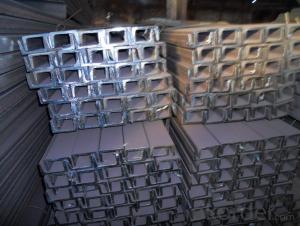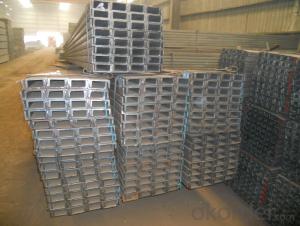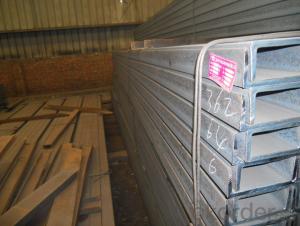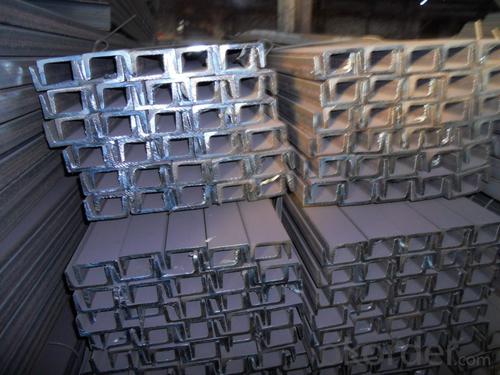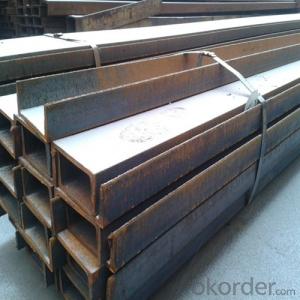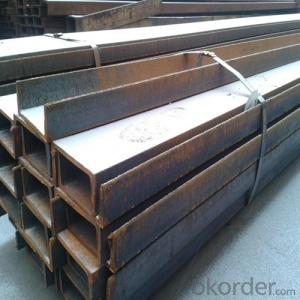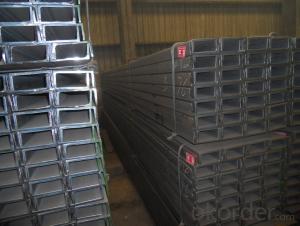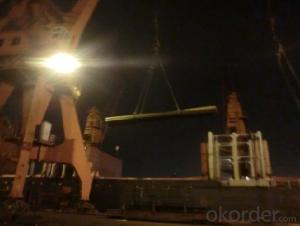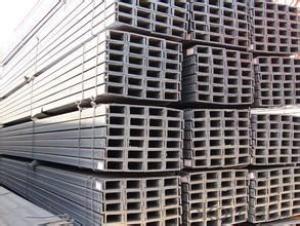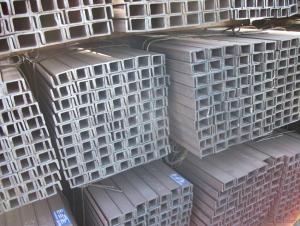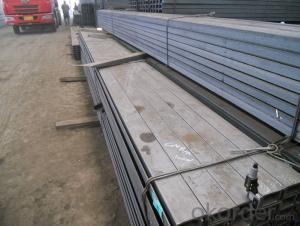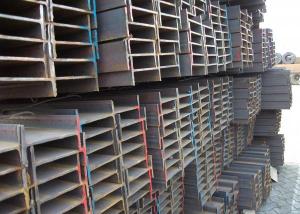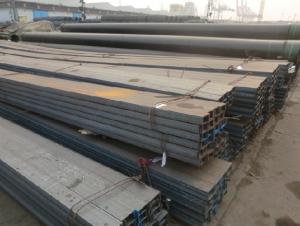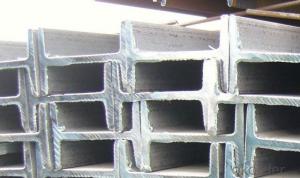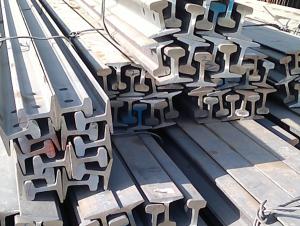Hot Rolled Carbon Steel U-Channel with High Quality
- Loading Port:
- Tianjin
- Payment Terms:
- TT or LC
- Min Order Qty:
- 20 m.t.
- Supply Capability:
- 1000 m.t./month
OKorder Service Pledge
OKorder Financial Service
You Might Also Like
Product Description:
OKorder is offering Hot Rolled Steel U-Channel at great prices with worldwide shipping. Our supplier is a world-class manufacturer of steel, with our products utilized the world over. OKorder annually supplies products to European, North American and Asian markets. We provide quotations within 24 hours of receiving an inquiry and guarantee competitive prices.
Product Applications:
Hot Rolled Steel U-Channel can be applied to construction of warehouses, workshops, sport stadiums and car parks etc.The hot rolled channel steel belongs to carbon structural steel which is applied to in the field of construction and machinery.In details, the hot rolled channel steel is usually used for arch-itechtural structure, and they could be welded in order to support or hang a vari-ety of facilities. They are also usually used in combination with I beam. Generally,the hot rolled channel steel we supply must possess perfect welding property, riveting property and mechanical property and so on.
Product Advantages:
OKorder's Hot Rolled Steel U-Channel are durable, strong, and resist corrosion.
Main Product Features:
· Premium quality
· Prompt delivery & seaworthy packing (30 days after receiving deposit)
· Corrosion resistance
· Can be recycled and reused
· Mill test certification
· Professional Service
· Competitive pricing
Product Specifications:
We supply high quality MS Channel at reasonable price, including Chinese standard, Japanese standard and so on.
Standard | GB/JIS |
Material Grade | Q235,SS400 |
Technique: | Hot Rolled |
Sizes as per chinese standard: | 50*37*4.5mm - 300*89*11.5mm |
Sizes as per japanese standard: | 50*25*3mm – 200*80*7.5mm |
Length: | 6meter, 9meter, 12meter |
The chemical composition of HR Channel Steel according to Q235B
Alloy No | Grade | Element(%) | ||||
C | Mn | S | P | Si | ||
Q235 | B | 0.12-0.20 | 0.3-0.7 | ≦0.045 | ≦0.045 | ≦0.3 |
Package & Delivery of MS Channel:
1.The hot rolled channel steel will be packed in bundle with steel wire at each end of every bundle and color marking in order to help the customer to recognize his goods more easily at sight.
2. And the hot rolled channel steel could be loaded into 20ft or 40ft container, or by bulk cargo.If the weight of each bundle reaches more than 3.5 mt, the loading by break bulk cargo should be choosed.When the weight of each bundle reaches less than 3mt, the loading by container should be choosed.
3.As for the transportaion from mill to loading port, the truck will be usually used. And the maximum quantity for each truck is 40mt.
4.All in all, we could do in accordance with customer's request
FAQ:
Q1: Why buy Materials & Equipment from OKorder.com?
A1: All products offered byOKorder.com are carefully selected from China's most reliable manufacturing enterprises. Through its ISO certifications, OKorder.com adheres to the highest standards and a commitment to supply chain safety and customer satisfaction.
Q2: How do we guarantee the quality of our products?
A2: We have established an advanced quality management system which conducts strict quality tests at every step, from raw materials to the final product. At the same time, we provide extensive follow-up service assurances as required.
Q3: Can stainless steel rust?
A3: Stainless does not "rust" as you think of regular steel rusting with a red oxide on the surface that flakes off. If you see red rust it is probably due to some iron particles that have contaminated the surface of the stainless steel and it is these iron particles that are rusting. Look at the source of the rusting and see if you can remove it from the surface.
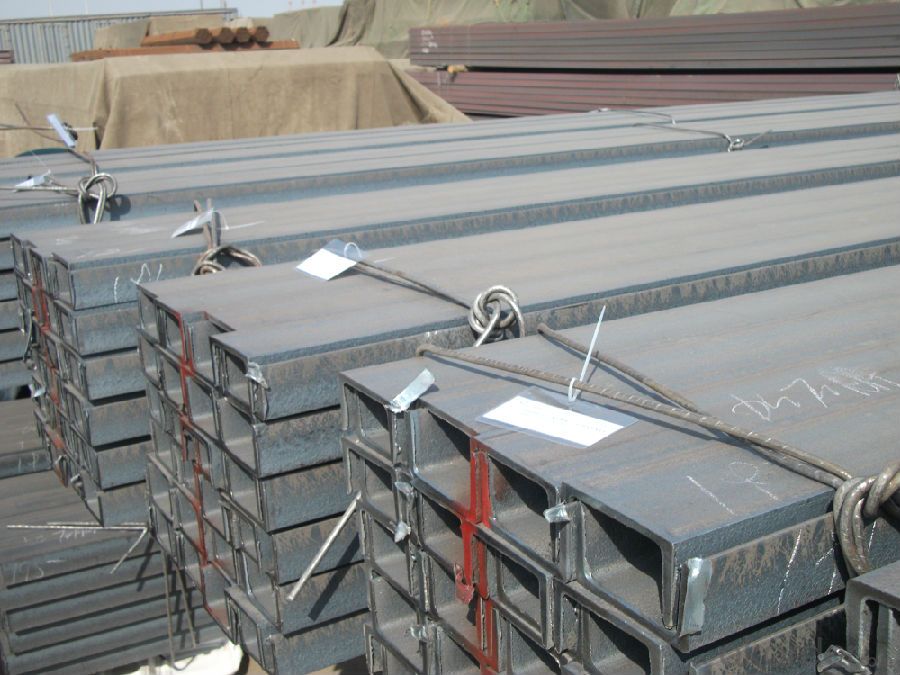
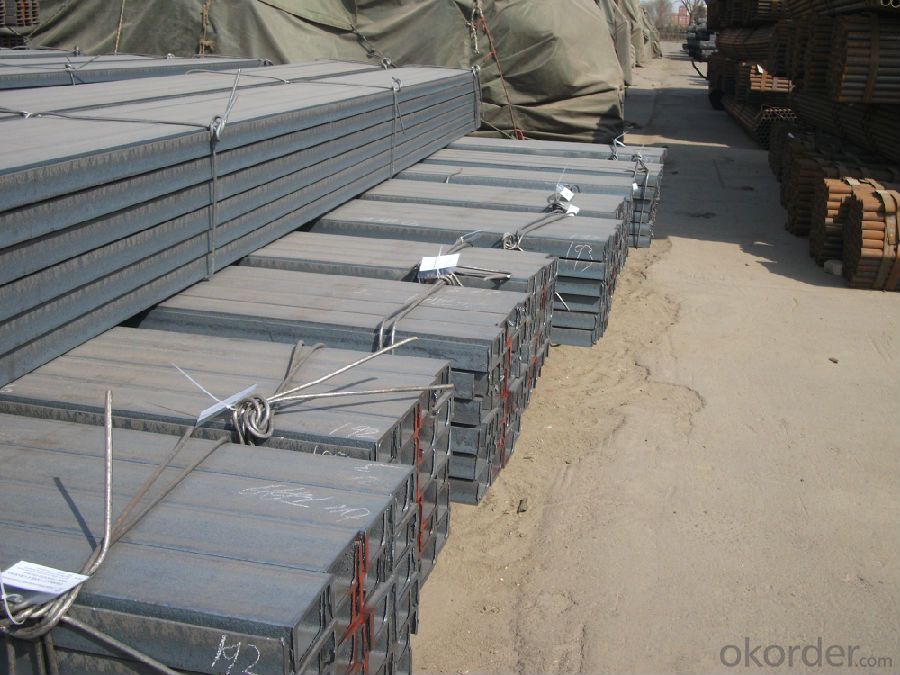
- Q: How do engineers determine the appropriate size of steel I-beams for a specific application?
- The appropriate size of steel I-beams for a specific application is determined by engineers who carefully consider various factors. These factors include load requirements, span length, and safety standards. To begin, the engineers analyze the load requirements of the application, which encompass both the dead load and the live load. This analysis helps determine the maximum load that the steel I-beams must bear. Next, the engineers take into account the span length, which refers to the distance between the supports on which the steel I-beams will be placed. Longer spans necessitate larger beams to ensure resistance against bending and deflection. After determining the load requirements and span length, the engineers consult design codes and safety standards like the AISC Manual. These standards offer tables and formulas that aid in determining the required moment of inertia and section modulus for the given loads and span length. The engineers also consider other factors such as the type of steel material, desired structural rigidity, and additional considerations like fire resistance or vibration dampening. These considerations play a role in selecting the appropriate size and shape of the steel I-beam. To simulate and analyze the behavior of the steel I-beams under different loads and conditions, engineers often utilize CAD software and structural analysis tools. This allows them to fine-tune their selection and ensure that the chosen I-beam size meets the required safety factors, deflection limits, and other performance criteria. In conclusion, engineers determine the appropriate size of steel I-beams for a specific application by taking into account load requirements, span length, safety standards, material properties, and other factors. Through careful analysis and the use of design codes and software, engineers can confidently select the most suitable I-beam size to ensure structural integrity and safety.
- Q: What is the difference between the support of shed support and the support of joist support in coal mine?
- Two support process is the first column dig nest, and then planted a leg, finally.
- Q: What is the modulus of elasticity of No. 16 I-beam?
- The modulus of elasticity of No. 16 I-beam is 206000 N/mm2.Generally speaking, the elastic body exerts an external function, and the elasticity experiences the change of the shape (called strain). The general definition of the elastic modulus is that the stress is divided by the strain.
- Q: Are steel I-beams suitable for supporting rooftop gardens with water features?
- Steel I-beams can be suitable for supporting rooftop gardens with water features, depending on several factors. Steel I-beams are known for their strength and load-bearing capabilities, making them a popular choice for structural support in construction projects. When considering the suitability of steel I-beams for supporting rooftop gardens with water features, it is important to assess the weight and load distribution of the garden and water features. This includes considering the weight of the soil, plants, water reservoirs, and any additional structures such as ponds or fountains. Steel I-beams are designed to withstand heavy loads, and with proper engineering and calculations, they can be adequately sized and positioned to support the weight of a rooftop garden with water features. However, it is crucial to consult with a structural engineer or a qualified professional to ensure that the steel I-beams are properly designed and installed to handle the specific requirements of the rooftop garden. Factors such as the size and span of the I-beams, the distance between supports, and the overall structural integrity of the building must all be taken into consideration. Additionally, the possibility of water leakage or excess moisture should also be evaluated to prevent any potential damage to the steel beams. Furthermore, regular maintenance and inspection of the steel I-beams are essential to ensure their ongoing suitability for supporting rooftop gardens with water features. Regular checks for signs of corrosion, instability, or any structural issues should be conducted to maintain the safety and stability of the rooftop garden. In summary, steel I-beams can be suitable for supporting rooftop gardens with water features, but it is important to consult with a structural engineer or a qualified professional to ensure proper design, installation, and maintenance to ensure the safety and stability of the structure.
- Q: Are Steel I-Beams susceptible to termite damage?
- No, steel I-beams are not susceptible to termite damage. Termites primarily feed on wood and other cellulose-based materials, and they have no interest in consuming steel. Therefore, steel I-beams provide a reliable and durable structural solution as they are not affected by termite infestations.
- Q: How do steel I-beams contribute to the overall safety of a structure?
- Steel I-beams contribute to the overall safety of a structure in several ways. Firstly, their design and construction make them incredibly strong and resistant to bending or twisting forces. This means that they can support heavy loads and distribute the weight evenly across the structure. By providing a strong and stable framework, steel I-beams minimize the risk of structural collapse, ensuring the safety of occupants. Additionally, steel I-beams have a high level of fire resistance. Steel has a high melting point, so it can withstand high temperatures for longer periods compared to other construction materials such as wood or concrete. This fire resistance reduces the risk of structural failure during a fire, giving occupants more time to evacuate the building safely. Moreover, steel I-beams are durable and long-lasting, with a high resistance to corrosion and degradation. This ensures that the structure remains intact and stable over time, reducing the risk of sudden failures or collapses. The strength and durability of steel I-beams also make them less susceptible to natural disasters such as earthquakes or strong winds, further enhancing the safety of the structure. In summary, steel I-beams contribute to the overall safety of a structure by providing a strong and stable framework, high fire resistance, and durability. Their ability to withstand heavy loads, distribute weight evenly, and resist bending or twisting forces ensures the structural integrity of the building, minimizing the risk of collapse. Combined with their fire resistance and durability, steel I-beams offer a reliable and secure foundation for a safe structure.
- Q: What are the common applications for steel I-beams?
- Steel I-beams are commonly used in construction and engineering applications due to their strength and versatility. Some of the common applications for steel I-beams include: 1. Building construction: Steel I-beams are widely used in the construction of buildings, including both commercial and residential structures. They are used to provide structural support and stability, particularly for load-bearing walls and floors. 2. Bridges: Steel I-beams are also commonly used in the construction of bridges. They can support heavy loads and span long distances, making them ideal for bridge construction. 3. Industrial structures: Steel I-beams are frequently used in the construction of warehouses, factories, and other industrial structures. They provide a strong and durable framework for these buildings, allowing for the safe storage of heavy equipment and materials. 4. Mezzanine floors: Steel I-beams are often used to create mezzanine floors in buildings. These additional floors can be used to maximize space, providing extra storage or workspace without the need for additional construction. 5. Roof support: Steel I-beams are used in the construction of roofs, especially in large structures such as stadiums or warehouses. They offer structural support and stability, ensuring the roof can withstand heavy loads and adverse weather conditions. 6. Automotive industry: Steel I-beams are commonly used in the automotive industry for various applications, including the construction of car frames, chassis, and suspension systems. They provide strength and rigidity to ensure the safety and performance of vehicles. 7. Mining and infrastructure: Steel I-beams are utilized in mining and infrastructure projects, such as tunnels, underground structures, and supporting structures for heavy machinery. Their strength and durability make them suitable for these demanding environments. 8. Material handling equipment: Steel I-beams are often used in the construction of cranes, hoists, and other material handling equipment. They offer the necessary strength and stability to lift and move heavy loads safely. Overall, steel I-beams have a wide range of applications due to their strength, versatility, and ability to support heavy loads. From building construction to automotive manufacturing, their use is essential for various industries.
- Q: What are the environmental implications of using steel I-beams in construction?
- The use of steel I-beams in construction has both positive and negative environmental implications. On the positive side, steel is a highly durable and strong material, which allows for the construction of long-lasting and sturdy buildings. Moreover, steel is recyclable, reducing the need for new production and minimizing waste. However, the production of steel I-beams requires a significant amount of energy and emits greenhouse gases, contributing to climate change. Additionally, the extraction of iron ore and the mining of other materials used in steel production can have adverse environmental impacts, including habitat destruction and water pollution. Therefore, while steel I-beams offer structural advantages, it is crucial to consider their environmental footprint and explore sustainable alternatives whenever possible.
- Q: Can steel I-beams be used for elevated walkways or bridges?
- Indeed, elevated walkways or bridges can utilize steel I-beams. In construction, steel I-beams are widely employed owing to their robustness and structural soundness. These beams are engineered to bear substantial loads and offer stability, rendering them perfect for walkways or bridges. The unique shape of I-beams enables them to distribute weight more effectively and resist bending or buckling. Moreover, steel is a resilient material capable of withstanding harsh weather conditions and demanding minimal upkeep. Consequently, steel I-beams have become a favored option for constructing elevated walkways or bridges, guaranteeing the safety and dependability of these structures.
- Q: Can steel I-beams be used in outdoor applications?
- Yes, steel I-beams can be used in outdoor applications. Steel I-beams are known for their strength and durability, making them suitable for various construction projects, including outdoor applications. They are commonly used in outdoor structures such as bridges, building frames, and support structures. Steel is resistant to weather elements such as rain, wind, and extreme temperatures, making it ideal for outdoor use. Additionally, steel can be treated or coated to provide further protection against corrosion and rust, ensuring its longevity in outdoor environments. Overall, steel I-beams are a reliable and versatile choice for outdoor applications due to their strength, durability, and resistance to weather conditions.
Send your message to us
Hot Rolled Carbon Steel U-Channel with High Quality
- Loading Port:
- Tianjin
- Payment Terms:
- TT or LC
- Min Order Qty:
- 20 m.t.
- Supply Capability:
- 1000 m.t./month
OKorder Service Pledge
OKorder Financial Service
Similar products
Hot products
Hot Searches
Related keywords
